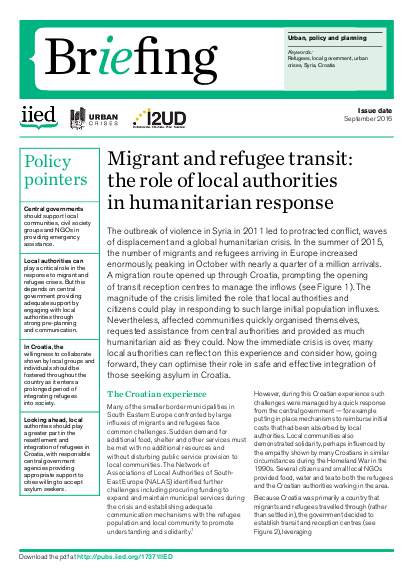
The outbreak of violence in Syria in 2011 led to protracted conflict, waves of displacement and a global humanitarian crisis. In the summer of 2015, the number of migrants and refugees arriving in Europe increased enormously, peaking in October with nearly a quarter of a million arrivals. A migration route opened up through Croatia, prompting the opening of transit reception centres to manage the inflows. The magnitude of the crisis limited the role that local authorities and citizens could play in responding to such large initial population influxes. Nevertheless, affected communities quickly organised themselves, requested assistance from central authorities and provided as much humanitarian aid as they could. Now the immediate crisis is over, many local authorities can reflect on this experience and consider how, going forward, they can optimise their role in safe and effective integration of those seeking asylum in Croatia.
Resource collections
- Topics
- UN Habitat - Urban Response Collection
- Urban Response - Urban Crisis Preparedness and Risk Reduction
- Urban Response Collection - Community Engagement and Social Cohesion
- Urban Response Collection - Economic Recovery
- Urban Response Collection - Environment and Climate Change
- Urban Response Collection - Housing, Land and Property
- Urban Response Collection - Urban Crisis Response, Recovery and Reconstruction
- Urban Response Collection - Urban Resilience
